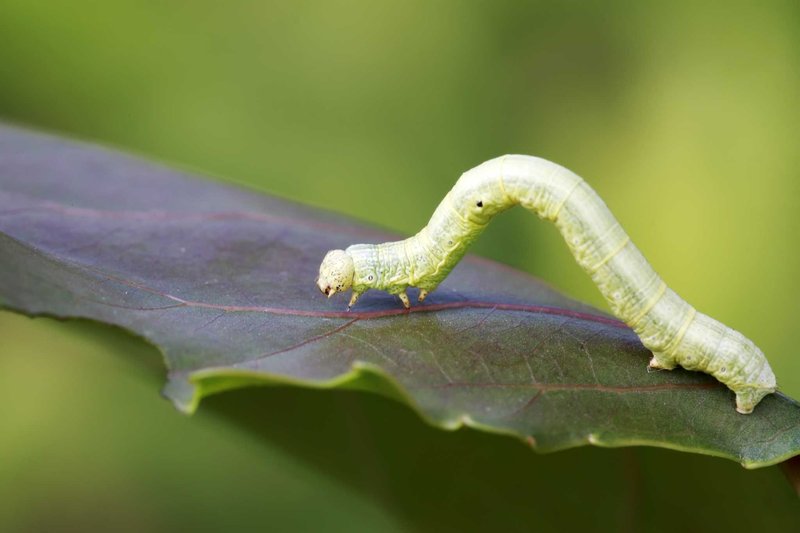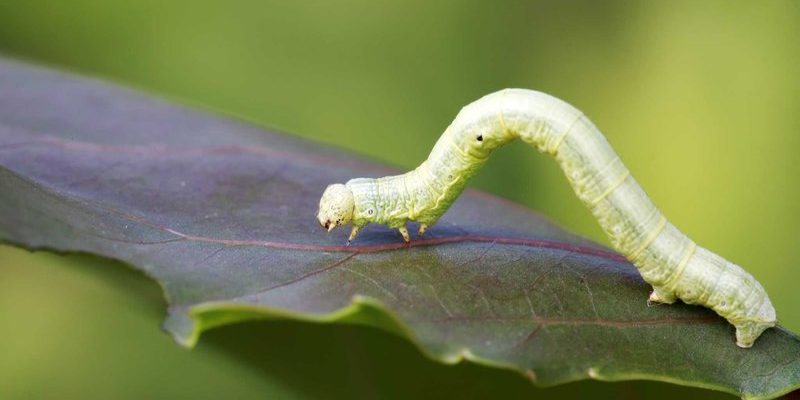
Inchworms, or moth caterpillars, are soft-bodied and protein-rich, making them an appealing food source for many bird species. But can you really farm them? Let’s dig into the ins and outs of inchworm farming and whether it’s a viable option for your backyard birds.
What Are Inchworms?
Inchworms are the larvae of certain moths, typically belonging to the Geometridae family. You might recognize them by their distinctive inching movement, which gives them their name. They’re not just cute; they’re also high in protein and fat, making them a fantastic energy source for birds like bluejays, robins, and sparrows.
These tiny creatures have an interesting life cycle, transitioning from eggs to caterpillars, then to pupae, and finally to adult moths. Each stage has its own role in the ecosystem. Inchworms play a critical role in the food web, serving as snacks for birds while also aiding in soil health by decomposing organic matter.
Since inchworms can live on various plants, they can be found in gardens, forests, and even urban areas. So, if you’ve noticed some inchworms around, you might already be on your way to tapping into this resource.
Why Farm Inchworms for Birds?
Here’s the thing: farming inchworms can offer several benefits beyond simply providing a snack for your backyard birds. First and foremost, having a ready supply of inchworms ensures you’re giving your feathered friends a balanced diet that includes protein and essential fatty acids.
Moreover, it can promote sustainable practices in your garden. By farming inchworms, you’re reducing reliance on commercial bird foods, many of which contain fillers and artificial ingredients. Plus, cultivating inchworms can also encourage natural pest control, as birds will help manage other unwanted insects in your garden.
If you’re a bird enthusiast, raising inchworms can deepen your connection to nature. Watching birds swoop down to your feeder for a tasty treat can be incredibly rewarding. You might even find yourself learning about different bird species and their unique feeding habits.
Setting Up Your Inchworm Farm
Starting your own inchworm farm is easier than you might think. Here’s a step-by-step guide to get you going:
1. **Choose a Location**: Pick a spot in your garden or yard that has partial shade and moisture. Inchworms love to hide in cool, damp environments.
2. **Gather Supplies**: You’ll need a container—an old aquarium or plastic bin works well. Ensure it has ventilation holes to keep your inchworms healthy. You’ll also need some leaves for food, as inchworms primarily eat foliage.
3. **Collect Inchworms**: Look for inchworms on trees or shrubs, particularly during spring and summer. Gently collect them and place them in your container. Make sure to provide a variety of leaves to keep them happy and well-fed.
4. **Maintain the Environment**: Keep the container moist but not soaked. Check regularly for mold and remove any dead inchworms or leaves to keep the area clean.
5. **Harvesting**: Once your inchworms grow and are ready, you can start feeding them to your birds. Just ensure you’re only taking what you need, allowing some inchworms to complete their life cycle.
Feeding Inchworms to Birds
Once you’ve been successful in farming inchworms, you’ll want to know how to serve them up to your avian friends. You might be wondering, what’s the best way to offer inchworms to birds?
– **Directly in Feeders**: You can sprinkle live inchworms on your bird feeder or ground. Many birds enjoy catching their food, so observing them hunt for inchworms can be quite a show!
– **Mix with Other Foods**: If you’re using a seed mix, you might consider blending in some chopped inchworms. This could encourage birds to try them out, especially if they’re initially hesitant.
– **Offer as a Treat**: Use inchworms as an occasional treat, similar to how you might offer suet cakes or mealworms. Birds will appreciate the variety in their diet.
Keep in mind that not all birds will instantly take to inchworms, especially if they are used to a diet of seeds. But with a little patience, they might just learn to love this new addition!
Challenges of Farming Inchworms
While farming inchworms sounds like a great idea, it’s not without its challenges. Here are a few hurdles you might encounter:
– **Pest Management**: Like any farm, you may face pests or mold problems. Keeping your inchworm environment clean is key. If you notice infestations, consider natural treatments rather than chemicals, which could harm your inchworms.
– **Lifecycle Understanding**: If you want a continuous supply, you need to understand inchworm life cycles. They won’t be available year-round unless you stagger your harvesting and maintain several generations in your farm.
– **Weather Conditions**: Inchworms thrive in specific temperatures and moisture levels. If your area is going through a dry spell or extreme temperatures, it can affect their survival and growth.
Don’t let these challenges discourage you. Every farming venture has its ups and downs, and inchworms can still be a rewarding endeavor for bird lovers.
Alternatives to Inchworms
If inchworm farming seems a bit daunting, you might be wondering if there are any alternatives for feeding birds nutritious food. Here are a few options to consider:
– **Mealworms**: These are a popular choice among bird enthusiasts. They’re high in protein and can be bought live or dried. Plus, they’re easier to farm than inchworms!
– **Crickets**: Another protein-packed option, crickets can be farmed similarly to inchworms. They’re lively and can attract various bird species.
– **Native Seeds and Nuts**: Providing high-quality seeds and nuts is an excellent way to attract a variety of birds. Many seed mixes are available that cater to different species’ preferences.
Each of these alternatives has its own benefits and challenges, so it’s worth researching what works best for you and the birds in your area.
Final Thoughts on Farming Inchworms for Bird Food
Farming inchworms for bird food can be a fulfilling and sustainable way to support local wildlife. It’s like adding a secret ingredient to your bird-feeding routine that not only nourishes birds but also connects you with nature in a hands-on way.
Remember, patience is key. It might take a little time to get your inchworm farm up and running, but the rewards of seeing birds flourish in your backyard will be well worth the effort. Whether you stick with inchworms or explore other options, you’re making a positive impact on your local ecosystem. Happy farming!

